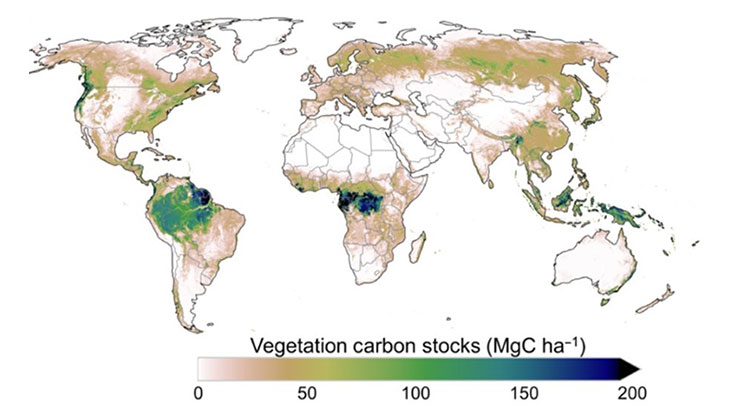Exploring Drivers of Change in Forest Ecosystems from the Tree to the Globe

How are human activities and natural disturbances contributing to changes in tree population dynamics and associated forest carbon stocks and stock changes? A combination of natural disturbances and human activities have led to a slow decline in the forest carbon sink in the United States, however carbon stocks are increasing substantially on a global scale. Understanding how human and natural drivers are impacting forest ecosystems today will help to inform the potential and limitations of these ecosystems in the future.
As climate change continues to wreak havoc around the world, forests are being targeted as an essential part of a portfolio approach to mitigate climate change and reduce greenhouse gas emissions to net zero by 2050. An important part of assessing the potential of forests is having an empirical foundation to assess current conditions and the drivers contributing to ecosystem changes. Through the development of a standardized forest demographic index applied to remeasurement data from the national forest inventory (NFI), Northern Research Station scientists observed significant population decline in most species examined, which was particularly severe, albeit size-dependent, among subalpine tree species. This provides evidence of widespread shifts in the size-structure of montane forests in the western United States. These shifts were driven in part by natural disturbance (e.g., fire, insects, and disease). Additionally, we examined the impact of insects and disease on carbon sequestration capacity. Forests with evidence of recent insect disturbance sequestered an average of 69 percent less carbon in live trees than areas with no recent disturbance. Forests with evidence of recent disease disturbance sequestered an average of 28 percent less carbon in live trees than areas with no recent disturbance. However, at a global level, data suggests carbon stocks are increasing, despite increases in the frequency and severity of natural disturbance. Understanding how human and natural drivers are impacting forest ecosystems today will help to inform the potential and limitations of these ecosystems in the future.
Contacts
- Grant Domke, Research Forester
Publications and Resources
- Insect and Disease Disturbances Correlate With Reduced Carbon Sequestration in Forests of the Contiguous United States.
- Changes in global terrestrial live biomass over the 21st century
- Modeling land use change and forest carbon stock changes in temperate forests in the United States
- Over half of western United States' most abundant tree species in decline
Forest Service Partners
- Chris Woodall, Research Forester
- Brian Walters, Forester
External Partners
- NASA Jet Propulsion Laboratory
- The Nature Conservancy
- Michigan State University
- University of Minnesota
- National Park Service

